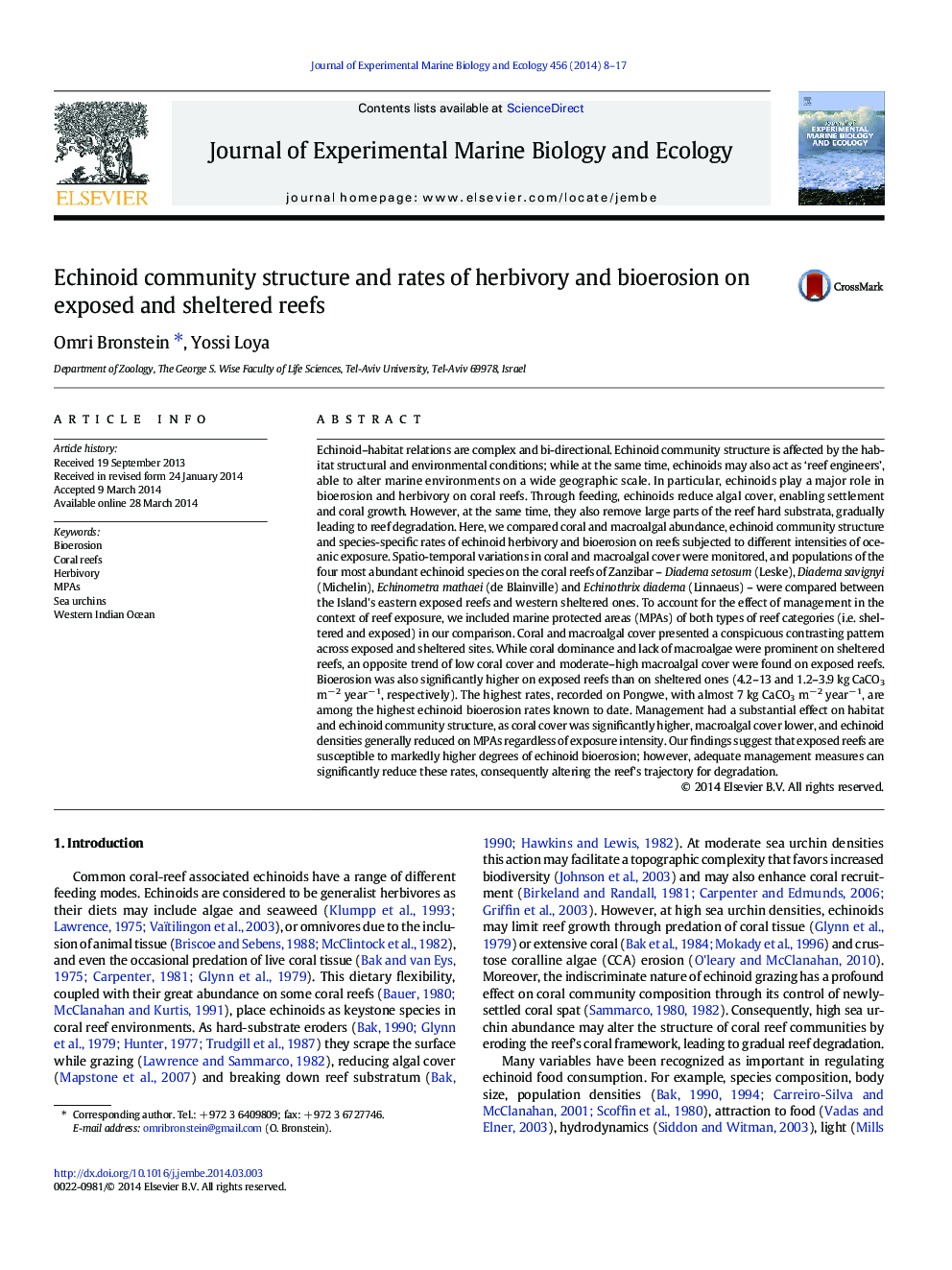| کد مقاله | کد نشریه | سال انتشار | مقاله انگلیسی | نسخه تمام متن |
|---|---|---|---|---|
| 4395537 | 1618419 | 2014 | 10 صفحه PDF | دانلود رایگان |
• Inverse coral/macroalgae relation observed between exposed and sheltered reefs.
• Echinoid bioerosion is higher on exposed rather than sheltered reefs.
• Echinoid bioerosion is lower on marine protected areas than on unprotected sites.
• Exposed reef are dominated by Echinometra and sheltered reefs by Diadema.
Echinoid–habitat relations are complex and bi-directional. Echinoid community structure is affected by the habitat structural and environmental conditions; while at the same time, echinoids may also act as ‘reef engineers’, able to alter marine environments on a wide geographic scale. In particular, echinoids play a major role in bioerosion and herbivory on coral reefs. Through feeding, echinoids reduce algal cover, enabling settlement and coral growth. However, at the same time, they also remove large parts of the reef hard substrata, gradually leading to reef degradation. Here, we compared coral and macroalgal abundance, echinoid community structure and species-specific rates of echinoid herbivory and bioerosion on reefs subjected to different intensities of oceanic exposure. Spatio-temporal variations in coral and macroalgal cover were monitored, and populations of the four most abundant echinoid species on the coral reefs of Zanzibar – Diadema setosum (Leske), Diadema savignyi (Michelin), Echinometra mathaei (de Blainville) and Echinothrix diadema (Linnaeus) – were compared between the Island's eastern exposed reefs and western sheltered ones. To account for the effect of management in the context of reef exposure, we included marine protected areas (MPAs) of both types of reef categories (i.e. sheltered and exposed) in our comparison. Coral and macroalgal cover presented a conspicuous contrasting pattern across exposed and sheltered sites. While coral dominance and lack of macroalgae were prominent on sheltered reefs, an opposite trend of low coral cover and moderate–high macroalgal cover were found on exposed reefs. Bioerosion was also significantly higher on exposed reefs than on sheltered ones (4.2–13 and 1.2–3.9 kg CaCO3 m− 2 year− 1, respectively). The highest rates, recorded on Pongwe, with almost 7 kg CaCO3 m− 2 year− 1, are among the highest echinoid bioerosion rates known to date. Management had a substantial effect on habitat and echinoid community structure, as coral cover was significantly higher, macroalgal cover lower, and echinoid densities generally reduced on MPAs regardless of exposure intensity. Our findings suggest that exposed reefs are susceptible to markedly higher degrees of echinoid bioerosion; however, adequate management measures can significantly reduce these rates, consequently altering the reef's trajectory for degradation.
Journal: Journal of Experimental Marine Biology and Ecology - Volume 456, July 2014, Pages 8–17
